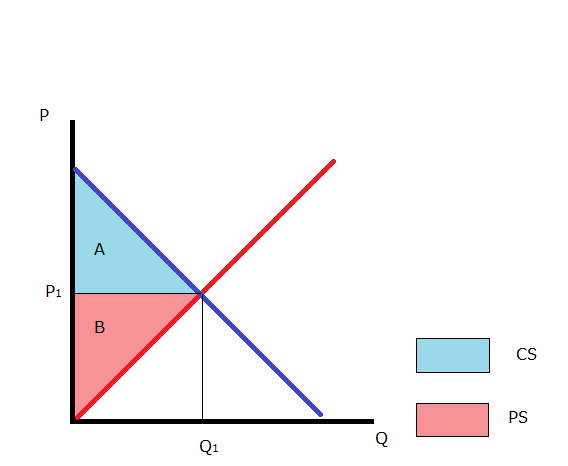This post will cover dead weight loss. In particular, what is the burden on consumers and producers.
The following supply-and-demand diagram outlines the part that is consumer surplus and the producer surplus.

Consumer part of surplus
Consumer surplus is define as the area below the demand curve, above the price up until the equilibrium point. Recalling that the demand curve represents the “willingness to pay”, the consumer surplus is the difference between the willingness to pay and the price actually paid.
Producer part of surplus
Consumer surplus is define as the above the supply curve, below the price up until the equilibrium point. Recalling that the supply curve represents the “willingness to sell”, the producer surplus is the difference between the willingness to pay and the price actually paid.
Now suppose that a distortion was introduced into this market.
Consider the example from a previous post where the government introduces a price floor.
This causes the quantity being being sold and purchased to correspond to point Q2 instead of Q1. This will have the following effects on consumers and producers.
Consumer part of dead weight loss
The “consumer part” of the dead weight loss is the area shaded green labelled “D”. It represents the units of the good no longer purchased because the price has been increased.
Producer part of dead weight loss
The “producer part” of the dead weight loss is the area shaded green labelled “E”. It represents the units of the good no longer sold because of the lack of demand at the given price. It is dead weight loss because the producer(s) were willing to sell this good at the equilibrium price but cannot because the market price is mandated to be higher.
Total part of dead weight loss
The total part of the dead weight loss is just the total dead weight loss. It is shaded as the green area and encompasses “D” and “E”. It just represents the total dead weight loss – sometimes referred to as the total welfare lost.

1 thought on “Consumer part of dead weight loss, Producer part of dead weight loss and total dead weight loss”